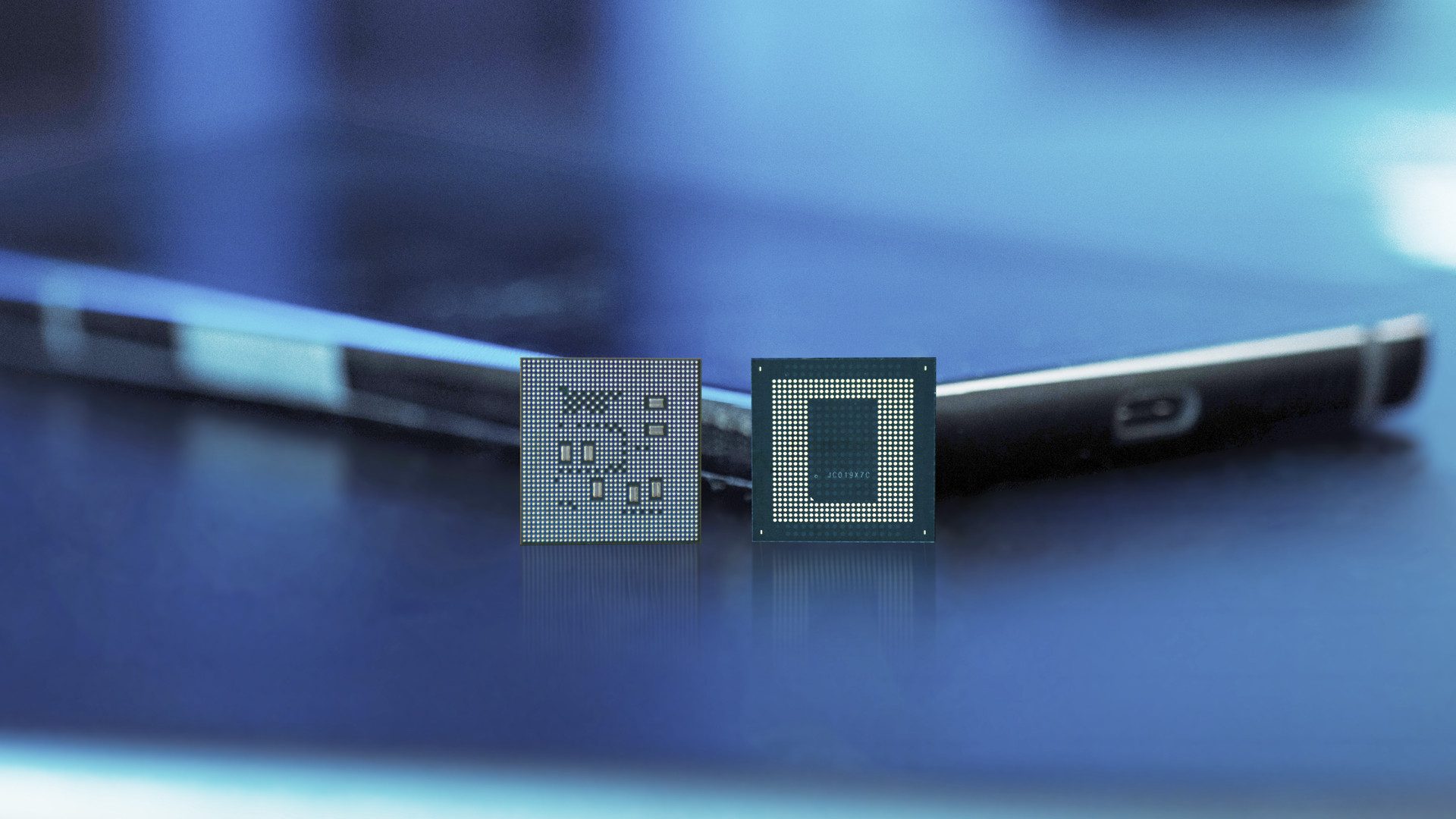
An SoC or “System on a Chip” is the central component of every modern smartphone, although it is an amalgam of many technologies. The purpose of this article is to give you a basic idea of what a modern smartphone SoC does and the current state of the market for “mobile processors.”
The ultimate goal is to help you, the consumer, use this information (and others) to help you choose your next smartphone. The goal here is not to dig deep into how a smartphone SoC works or to satisfy the curiosity of an already knowledgeable techie.
Instead, our goal is to give you, the average smartphone buyer, as much information as possible to help you choose the smartphone that best suits your needs. At the risk of sounding repetitive, the idea is to help you know just enough to make an informed purchase.
This central article will link to several other individual articles on smartphone SoCs where we will compare them to each other, introduce them and discuss specific models in detail.
Jump to
Are processors, SoCs, and chipsets the same thing?
Experienced smartphone buffs usually scoff at the word ‘processor’ and will tell you that an SoC (short for System on a Chip) or ‘chipset’ is a more accurate term. At the end of the day, all you need to know is that the ‘processor, ‘SoC’, and ‘chipset’ on a smartphone (in most cases) refer to the same entity—even though the terminology might not be entirely accurate.
The term processor was generally used to denote the Central Processing Unit used on desktop computers. Modern SoCs also get a CPU/processor—but it is just one of the many components that make up an SoC. So the answer you are looking for is this: While an SoC and processor are not the same things in concrete terms, over time, it has become an acceptable thing to call an SoC a processor or a chipset. I know this can be frustratingly confusing.
If it’s not the same as a processor, What really is an SoC?
The most common answer you might have heard often equates the SoC with the human brain. I disagree. A more accurate way to understand what an SoC is to think of it not as the brain—but as the human head. Yes, you read that right. I know this example is funny, but it is just simpler to visualize your head as the SoC—and your brain (which is located within the head)—as the processor.
Just like your head integrates many other parts, the SoC, too, contains various components. Many of these components also help take the load off the processor and help it perform more efficiently.
Take a look at the diagram below to visualize all the components that make up a modern SoC.
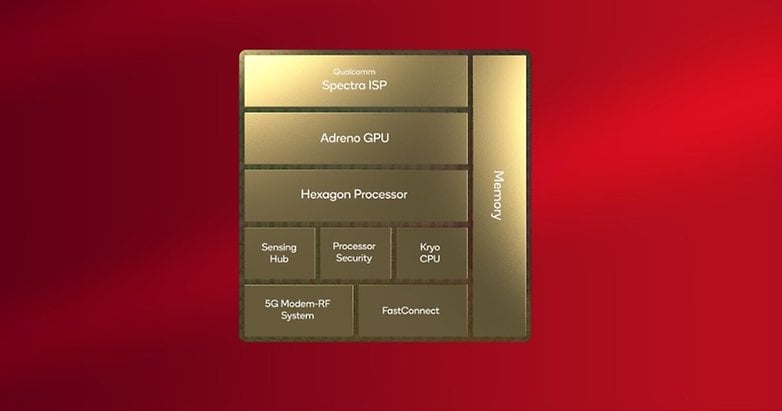
You can also think of the SoC as the most critical part of a modern smartphone. It effectively functions as a single unit and is responsible for handling almost every single task you ask your phone to perform. Be it something relatively mundane as making and receiving calls to something inherently more complex, like using the phone camera to click pictures and videos, then editing and rendering a final product using an editing app.
What is the ARM architecture?
Another name that you might have typically heard while talking about smartphone SoCs is ARM. What you need to know is that ARM is a British company that owns the license to the ARM architecture, instruction set, and CPU core design that is used by all companies that make SoCs.
No matter what smartphone brand you buy, and regardless of the SoC it uses, it is a given that it is based on ARM architecture.
You will hear a lot about ARM when you read smartphone launch articles—especially when you get to the part where the SoC specs are mentioned. For example, these articles will highlight what kind of ARM Cortex Cores a specific SoC uses.

Bonus Info: It is also interesting to know that major SoC-makers like Apple, Qualcomm, MediaTek, Huawei, and Unisoc do not actually manufacture SoCs in their own plants. Instead, they outsource this job to specialized semiconductor manufacturing companies like TSMC, Global Foundries, and SMIC. Samsung is the only smartphone SoC maker in this list that has the capability to design its own ARM-based SoCs and also manufacture them in-house.
What components does an SoC contain?
A typical modern smartphone SoC typically integrates the following components.
Central Processing Unit (CPU)
The single most important component of the modern smartphone, the CPU, is the actual brain behind your smartphone. A modern smartphone CPU typically has several cores, and its performance is measured in GigaHertz (GHz).
When we tech reviewers talk about smartphone performance, we will often use terms like ‘Cortex-X3’ or ‘Cortex-A510’. These are the names of the actual CPU core that nestle within the SoC. We will learn about smartphone cores and processors in a separate article.
Graphics Processing Unit (GPU)
While the CPU can handle several tasks, it is not specifically designed to handle graphics. Since most smartphones of today need to process highly demanding games (and video content), this task is handled by a dedicated GPU.
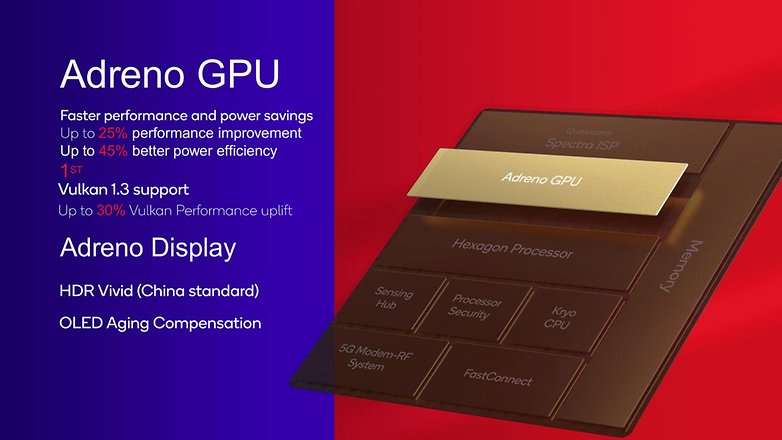
You will hear a lot about GPUs in smartphone reviews. Qualcomm SoCs typically use their own Adreno-branded GPUs, while other SoC makers rely on either ARM Mali or PowerVR GPUs.
Image Processing Unit (ISP)
Modern smartphones usually have a separate image processing unit. This essentially allows them to ‘convert’ data from an image sensor to a usable photo that you can then edit and share with friends and relatives.
In the past, the CPU used to handle this task as well. But manufacturers soon realized it is always a better idea to offload these tasks to a separate Image Processing Unit. Names you shall come across when discussing ISPs include ‘Spectra’ from Qualcomm and Imagiq from MediaTek.
Integrated Modems
Modern smartphones are communication devices, and a modem is the single most essential component that enables this basic feature. A modem is used to convert wireless signals into data that your phone can understand. Today’s smartphone modems integrate 5G, 4G, 3G, and Wi-Fi capabilities in a single unit. And while a majority of smartphone SoCs today feature an integrated modem, there are a few exceptions.
Recent examples include the Qualcomm Snapdragon 8 Gen 1 and Apple A15 Bionic, both of which use an external modem—the Snapdragon X65 or X55. By ‘external’ we mean that the modem unit is not part of the SoC. Another example of this is the Exynos 990 from Samsung, which also uses an external modem.
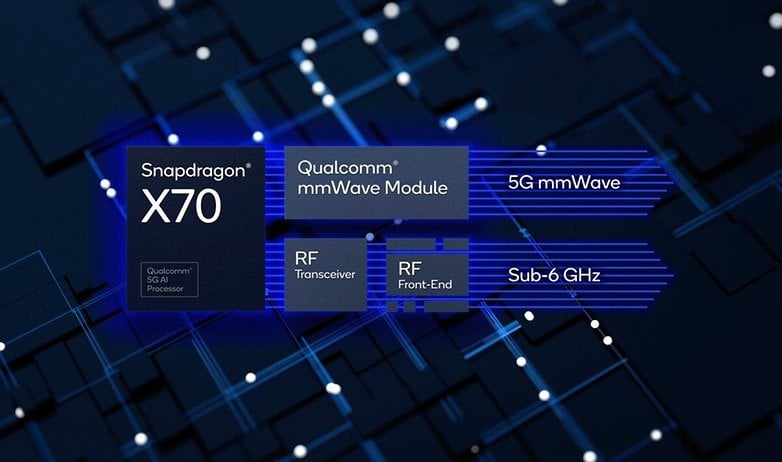
Not all SoC brands are keen on naming their modems. Qualcomm is a notable exception and the company usually denotes its modems with the letter X, followed by a number. The newest 5G modem from them, for example, is the Qualcomm Snapdragon X75.
MediaTek, HiSilicon, and Samsung don’t usually mention the modem ‘brand names” on their spec sheets and have generally shied away from naming them. Recently, however, MediaTek did make a big deal when it announced its first 5G-compatible modem and branded it as the MediaTek M70 5G modem. HiSilicon modems go by the ‘Balong’ brand name. However, you will rarely find this name used even on the official websites.
Other components
While these four are essential components, the modern SoC also integrates other parts. For example, Digital Signal Processors (DSP) are typically used to handle tasks like analyzing data from onboard sensors and sometimes even help with music playback.
With artificial intelligence and machine learning being touted as the next big thing, it is not uncommon for smartphone SoCs to integrate a dedicated Neural Processing Unit (NPU) custom-built for handling such tasks.
Manufacturing process
A phrase that you will often come across while reading SoC specs is something known as the ‘manufacturing process.’ It is listed in nanometers (nm). The simplest explanation I can think of right now is to tell you that a manufacturing process is a number used to understand how small the SoC’s internal nodes are.
While we can have a scholarly dissertation about manufacturing processes and the semiconductor fabrication process, that is way beyond the scope of this article. What you as a consumer need to understand is that the smaller the manufacturing process, the more complex/expensive/power efficient the SoC is.
Current flagship SoCs are based on 4-nm manufacturing processes, while flagship SoCs from 2020 were based on a 7-nm node. Mid-range and budget SoCs are typically based on 7, 10, 11, 12, and 14 nm manufacturing processes.
Who makes smartphone SoCs?
The major players in the smartphone SoC segment include the following companies.
- Apple
- Qualcomm
- MediaTek
- Samsung
- HiSilicon
- Unisoc
Here’s a brief overview of products from each of these SoC brands
Apple SoCs
Since Apple does not need its SoCs to use on several devices, it typically announces just one smartphone SoC every year. Until 2010, Apple relied on Samsung-sourced SoCs for the iPhone and iPad models. Since then, however, the company moved to its own ARM-based SoCs. The first Apple-designed SoC was the Apple A4 which debuted in 2010.
Thirteen years later, the newest smartphone SoC from Apple is called the Apple A16 Bionic which is used on the iPhone 14 Pro and Pro Max. It is widely thought to be the most powerful SoC currently available for any smartphone.
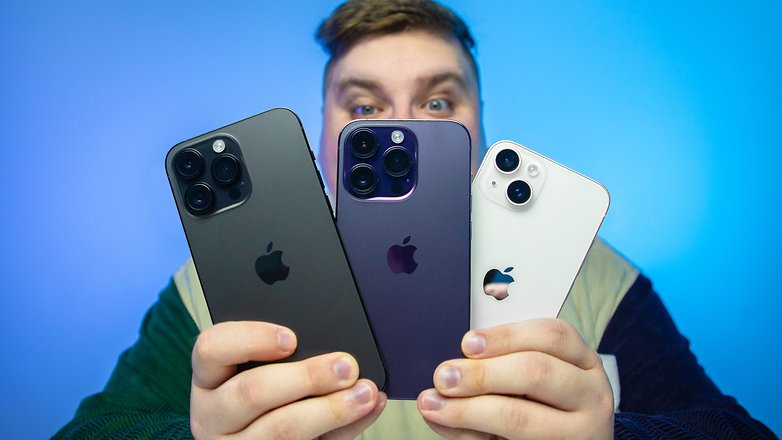
Previous generation A-series SoCs from Apple were also considered to be the fastest in their class. Apple uses the A-series SoC on its iPad lineup as well. Starting in 2021, the company launched its MacBook line-up that also comes powered by a modified version of the A14 Bionic SoC, which is marketed as the Apple M1 SoC.
Qualcomm SoCs
An American company, Qualcomm, is perhaps the most widely known smartphone SoC company. Its smartphone SoCs are sold under the Snapdragon brand. Qualcomm designs and sells a wide variety of SoCs ranging from entry-level and mid-range to high-end SoCs and is perhaps the most widely known brand in this segment.
Qualcomm Snapdragon 8 series
The 8 series SoCs from Qualcomm have long held the title of being the most powerful chipsets available for Android smartphones. In 2022, Qualcomm discontinued the 800 series and moved to the “Snapdragon 8 Gen” Series. After the Snapdragon 8 Gen 1 and 8+ Gen 1, Qualcomm’s top-of-the-line SoC for 2023 is the Snapdragon 8 Gen 2.
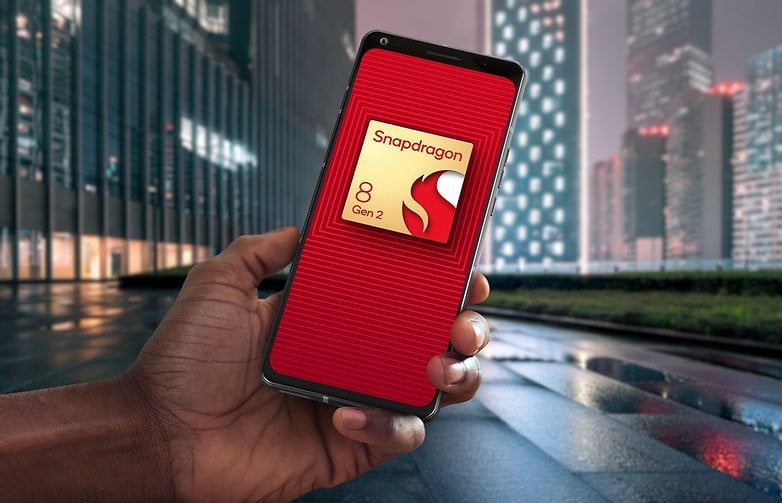
As you can see, this range of SoCs is reserved for rather premium smartphones. Qualcomm offers its best innovations in terms of artificial intelligence, machine learning, or connectivity. The former flagship SoCs are the Snapdragon 888+ and 888 of 2021 and the Snapdragon 865+ and 865 of 2020.
Qualcomm Snapdragon 7 series
The Snapdragon 7 Series is a line of mid-range SoCs. They are a little less powerful than the 8 series but still allow for a comfortable experience whether for photography or gaming. The current flagship model of this series is the Snapdragon 7+ Gen 2.
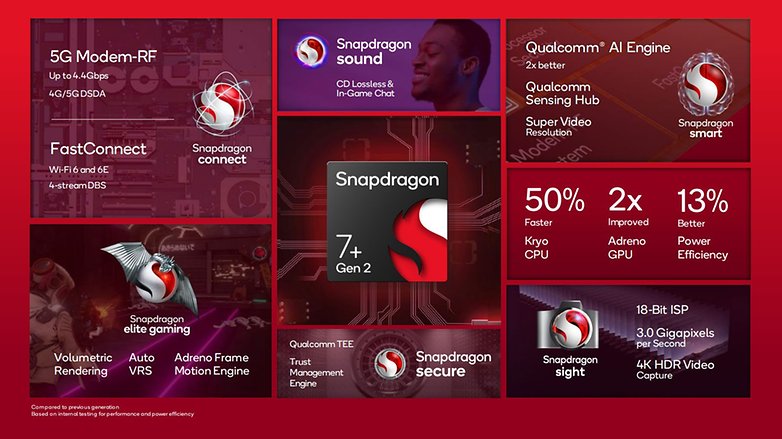
In this series, we also find the Snapdragon 778G+, 778G, 780G, 750G, or 720G. Snapdragon 700 series SoCs include the Snapdragon 765G, Snapdragon 732G, and Snapdragon 720G.
Qualcomm Snapdragon 6 series
The 6 series is the one that includes the SoCs that power affordable smartphones, whether they are mid-range at a low price or the entry-level. These SoCs don’t stand out for their power, but they offer what is needed to have sufficient fluidity in all daily tasks.
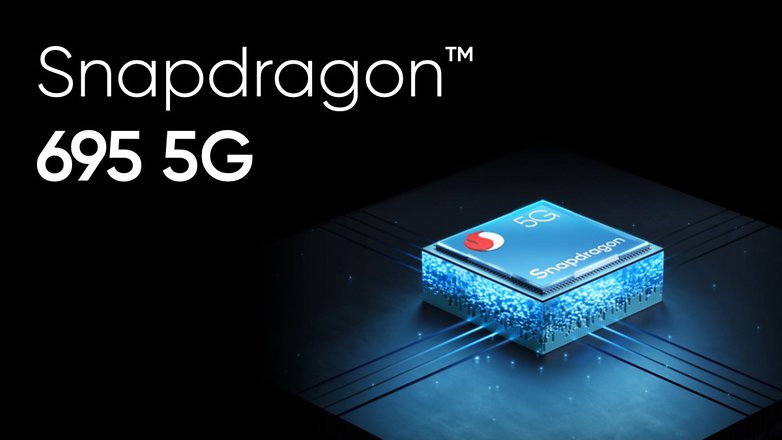
These SoCs are, for example, equipped with GPUs powerful enough to allow users to play the most graphically demanding games without too much of a flinch. The flagship model is the Snapdragon 6 Gen 1, but there are also Snapdragon 695 5G or 680.
Snapdragon 400 series
As you might have guessed by now, Snapdragon 4 series SoCs are typically used on low-cost smartphones. While these SoCs can handle most daily tasks, they are not designed for resource-intensive tasks like multitasking or playing games. The Snapdragon 4 series includes the Snapdragon 4 Gen 1 as well as the Snapdragon 480+, 480, or 460.
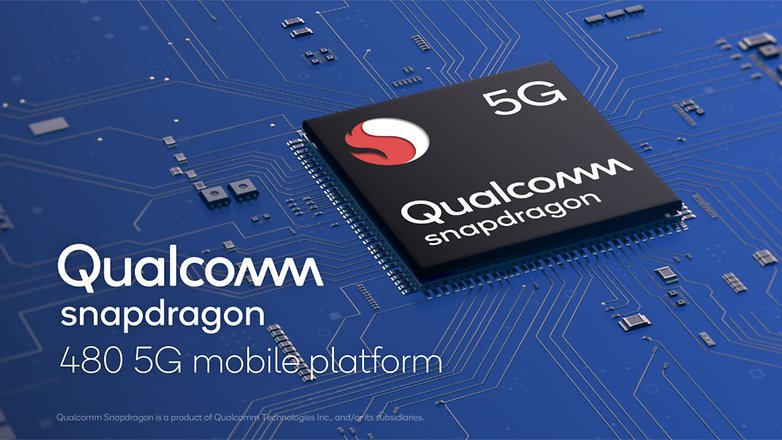
Qualcomm Series 2 processors
Positioned even below the budget 400 series chipsets, smartphones that use these very basic SoCs are usually sold in emerging markets. Most consumers who end up buying devices that use Qualcomm’s Snapdragon 200 series phones typically do not have the income to spend on more expensive devices. Another key trait of the owners of these phones is that almost all of them have recently upgraded from basic feature phones.
Examples: Snapdragon 215, Snapdragon 212, Snapdragon 205
Apart from these smartphone-oriented SoCs, Qualcomm also makes SoCs for smartwatches under its Wear Platform.
MediaTek SoCs
Originally known for its affordable SoCs that were typically used on cheaper smartphones, MediaTek is a Taiwanese company that designs smartphone SoCs. Of late, however, they have managed to pose a significant threat to Qualcomm’s domination in the segment thanks to its competitive entry-level and mid-range products. MediaTek is also inching closer to Qualcomm with its new high-end chipsets. MediaTek uses several brand names for its SoCs. The popular ones include the Helio and Dimensity lineup.
MediaTek Dimensity 5G
The Dimensity series from MediaTek is the Taiwanese company’s 5G-centric smartphone SoC series. Unlike the Qualcomm 800 series, which is targeted only at flagship and affordable flagship products, MediaTek’s Dimensity lineup includes both flagship-grade, mid-range, and budget SoCs.
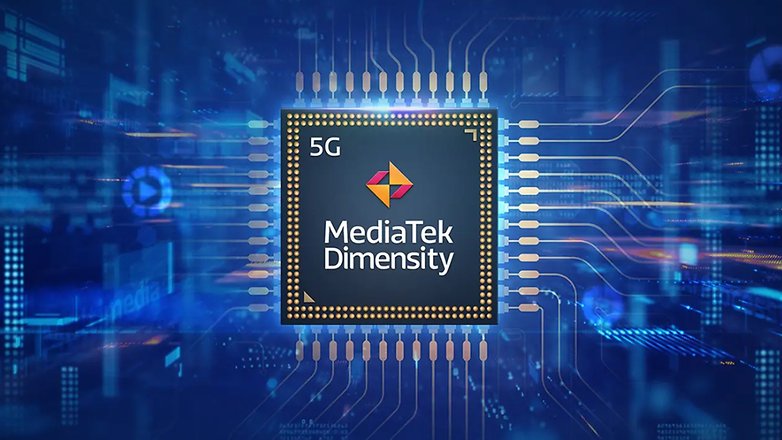
MediaTek’s current ultra high-end SoC is the Dimensity 9200, and there are also the Dimensity 9000+ and 9000. Depending on the price of the smartphones, you can also have versions with lesser specifications like the Dimensity 8200, 7200, 6080, and 1300.
MediaTek Helio G
The Helio G series from MediaTek are gaming-focused chipsets that typically cater to the entry-level and budget gaming audience. The Helio G lineup includes individual SoC models from the entry-level Helio G25 to the relatively powerful Helio G99.
MediaTek Helio P
The Helio P series is a popular line of budget SoCs from MediaTek. Before the G series came into vogue, the P series formed a key part of MediaTek’s budget portfolio. Many of the SoCs from the P series are near-identical to their cousins from the G series, with the only difference being the latter getting a slightly better GPU. Products from this lineup include the Helio P95, P90, and P70 in the top end, Helio P60 and P65 in the mid-range, and the Helio P20 series (P20, P22, P25) in the entry-level segment.
MediaTek Helio A
This is an entry-level lineup of SoCs that are almost always found on low-end Android smartphones—typically from Tier 2 and Tier 3 manufacturers that mostly concentrate on emerging markets. SoCs from MediaTek’s A series include the Helio A20, A22, and A25.
Samsung Exynos SoCs
Samsung is a South Korean conglomerate that has several business units. It also has a semiconductor unit that designs its own lineup of smartphone SoCs branded as Exynos. While Exynos SoCs are typically used on their own smartphones, there have been several instances in which Samsung has sold Exynos processors to other manufacturers. Identifying Samsung Exynos SoCs is a bit of a task, thanks to the company’s confusing naming scheme.
Flagship Exynos SoCs
Until 2022, Samsung offering high-end Exynos SoCs. But after the problems of the Exynos 2200 on the Galaxy S22 range, the manufacturer decided to switch to Qualcomm SoCs for its flagships. But it seems that the brand has abandoned its Exynos SoCs, at least for its high-end smartphones.
On the manufacturer’s official website, however, the Exynos 2200 and 2100 are still listed among the high-end SoCs.
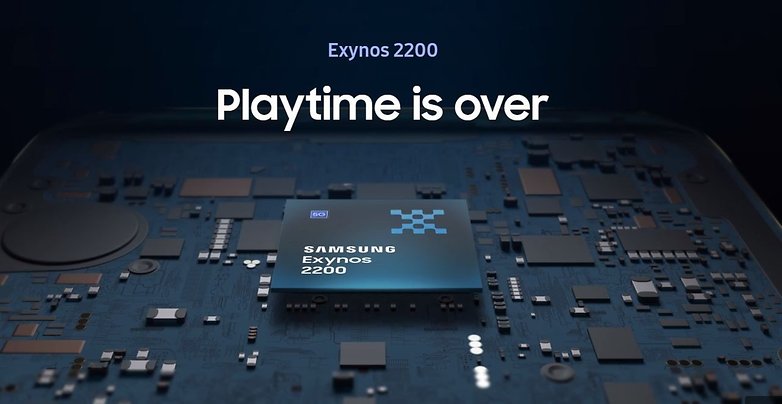
Entry Level and Mid Range Exynos SoCs
For the mid-range, Samsung mainly offers the Exynos 1380, which powers the Galaxy A54, and the Exynos 1330, for example. The Exynos 1280 from 2022 also remains one of Samsung’s flagship mid-range SoCs.
Also, since 2021, Samsung’s mid-range SoC lineup includes the 2019 Exynos 9600 series which includes SoCs like the Exynos 9609, 9610, and 9611. These SoCs, the 9611 in particular, are widely used in the company’s affordable smartphones.
HiSilicon (Huawei) SoCs
Chinese telecommunications giant Huawei is another brand that has its own lineup of smartphone SoCs. It is manufactured by a subsidiary company called HiSilicon, and its smartphone SoCs are marketed under the ‘Kirin’ brand.
Like Samsung, Huawei mostly limits its Kirin-branded SoCs to its own devices. The company’s former subsidiary Honor was also known to use Kirin SoCs. Huawei’s SoC business, however, is facing a lot of trouble because of the ongoing US-China trade war. Following recent issues with the US government, HiSilicon confirmed that it has stopped making Kirin SoCs. The future of Kirin SoCs, at the time of publishing this, hangs in the balance. Here’s a look at Kirin’s recent SoC lineup anyway.
Kirin 900 and 9000 series
The current flagship SoCs from HiSilicon belong to the Kirin 9000 series and include two SoCs – the Kirin 9000 and the 9000E. Their 2020 flagship SoCs included SoCs from the Kirin 990 lineup and included the Kirin 990, Kirin 990 5G, and the Kirin 990E 5G. If you go back in time, Huawei’s older flagship used the Kirin 970, Kirin 960, and Kirin 950 SoCs.
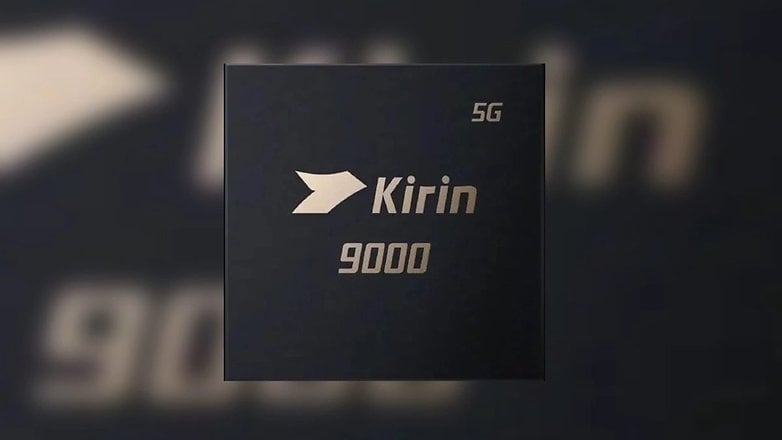
Kirin 800 series
The Kirin 800 series is positioned just below the flagship 900 series SoCs and is designed to be used on Huawei’s affordable flagship and upper mid-range handsets. The newest product from this lineup is the Kitin 820E 5G and its sibling, the Kirin 8205G.
Kirin 700 and Kirin 600 series
Huawei extensively used SoCs from the Kirin 700 and 600 series on its budget handsets. These SoCs are designed to compete against Qualcomm’s 600 and 700 series SoCs. However, this lineup hasn’t seen much in terms of new developments since 2017-18, and the last SoC to be announced from this lineup was the Kirin 710 lineup in 2018. The Kirin 6 series last saw an update in 2017 with the Kirin 659 SoC.
Unisoc SoCs (Previously Spreadtrum)
Unisoc is yet another smartphone SoC brand. While not as famous as the likes of Qualcomm, MediaTek, Samsung, or Huawei, Unisoc does have a comprehensive set of smartphone focussed SoCs. They are mostly used by manufacturers who concentrate on manufacturing devices targeted at the lower end of the price spectrum.
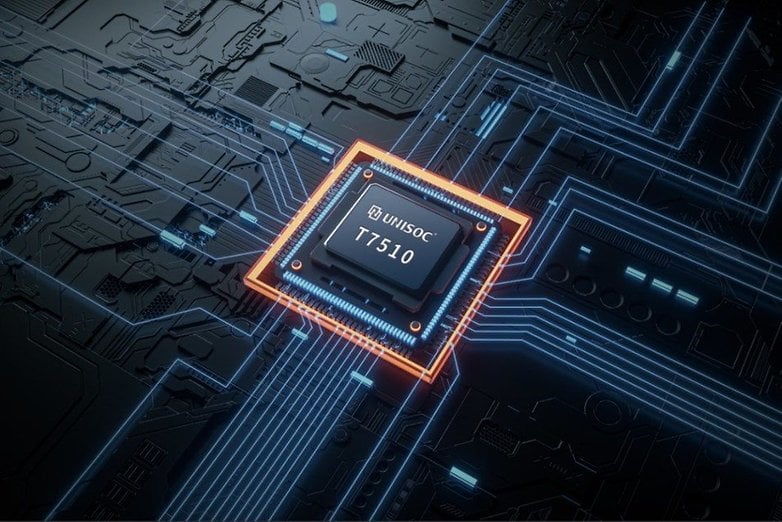
The company announced a powerful 5G-enabled SoC called the Unisoc Tiger T7520 SoC, which is based on a 6nm manufacturing process. The only other 5G-ready SoC from the company is the older Unisoc T7510 SoC which is a budget 5G SoC launched in mid-2020. Unisoc does have a wide portfolio of 4G-ready SoCs that include the likes of the T710, T618, and T610 SoCs.
Now that you have a basic understanding of what a smartphone SoC is and what the companies that operate in this space are, you can use this information to better understand the hardware specifications of your phone. This is just the first article in a planned series of smartphone SoC-related topics here on NextPit. We will update this article with more links around related topics in the near future
Watch this space for more!
Article updated in April 2023 with recent launches.






